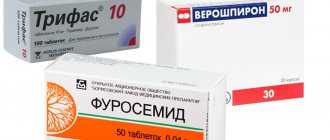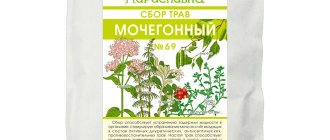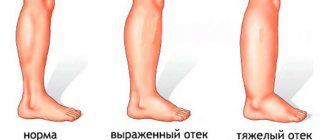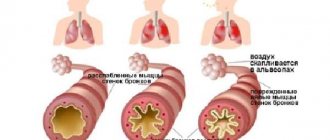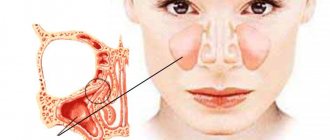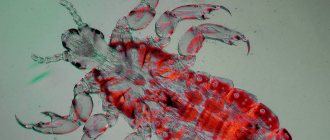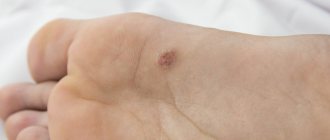Edema is a condition in which excessive amounts of fluid accumulate in certain organs or intercellular spaces. Swelling of the legs is especially common, since the lower extremities are constantly exposed to increased stress. The fluid is mainly localized in the area of the legs and feet.
Swelling can occur on one limb or on both. They usually appear in the evening.
Physiological reasons
In a healthy person, edema may appear in the evenings after heavy physical exertion or prolonged standing as a result of increased hydrostatic pressure in the blood vessels. The likelihood of swelling increases in the heat, when staying in a stuffy room or at high altitude, when drinking a large volume of liquid, excessively enjoying salty foods, and abusing alcoholic beverages (salt and alcohol retain water).
Swelling of the feet is especially common in women when wearing high-heeled or high-platform shoes. Due to the unnatural position of the foot, blood circulation in the lower extremities is significantly impaired, which leads to stagnation and accumulation of fluid. Similar processes are observed if you wear too narrow shoes and shoes with flat soles.
For physiological reasons, the swelling is mild and symmetrically covers the ankles and feet (occasionally the lower legs). When pressed with a finger, they leave an instantly disappearing mark. After rest they disappear completely.
If the legs swell for physiological reasons in women and men, then there is no need for special treatment. It is enough to adjust your lifestyle.
Hormonal fluctuations in women
In women, before the onset of menstruation, the concentration of progesterone in the blood decreases, which can cause fluid retention, causing pasty (swelling) ankles. Swelling is most pronounced during premenstrual syndrome.
During menopause, hormonal levels are constantly changing, so women may periodically swell their lower extremities. This problem can also be the result of hormone replacement therapy.
During reproductive age, swelling of the legs may occur when taking oral contraceptives.
Pathological causes
Quite often the legs swell in people with health problems.
Swelling is a symptom that accompanies:
- Traumatic injuries When injured, the skin usually becomes bluish or purple, abrasions and bruises appear, and the tissues become swollen. In case of injury, the swelling is always one-sided, located at the site of injury, and can spread to nearby tissues. Swelling of the limb is possible with bone fractures, dislocations, ligament damage, meniscus tears, severe bruises, burns, frostbite.
- Purulent processes With purulent lesions of the skin, soft tissues, bones, joints, dense swelling is localized in one place, quickly increasing in size. It is combined with redness or cyanosis of the skin, jerking pain, and signs of intoxication of the body.
- Kidney diseases Due to malfunctions of the kidneys, their filtering abilities are impaired and the tubules are damaged. As a result, the kidneys do not have time to remove fluid from the body, which is why it moves from the blood vessels into the tissues, which causes swelling of the feet and legs. In this case, the swelling is symmetrical, soft, watery, and elastic. In addition to the legs, they cover the arms, stomach, and face. They appear very quickly, often in the morning. An additional symptom is yellowing of the skin. Most often, the lower extremities swell with nephritis, pyelonephritis, glomerulonephritis, renal amyloidosis, nephrosis, membranous nephropathy, chronic renal failure.
- Pathologies of the heart and blood vessels In diseases of the cardiovascular system, edema is symmetrical and dense, pasty ankles and feet may be observed. Occasionally, swelling completely covers the lower leg, reaching the knees. In this case, swelling appears and resolves very slowly (within several weeks), the skin acquires a bluish tint and becomes cool. Most often, swelling of the legs is evidence of the initial stage of varicose veins. In this case, the swelling is accompanied by pain and heaviness in the lower extremities. Later, other signs appear - convulsions, protruding veins. In healthy people, due to the contraction of the muscles in the legs, venous blood moves from bottom to top. Venous valves prevent blood from flowing in the opposite direction. With varicose veins and thrombophlebitis, the functioning of the valves is disrupted, which is why blood begins to move in two directions. At the same time, it stagnates in the veins, which leads to increased venous pressure, thinning of the vein walls, and loss of tone. As a result, the permeability of the vessels increases, the fluid from them moves into the surrounding tissues, causing swelling. In addition, due to stagnation, the blood thickens, which increases the risk of blood clots. Swelling can be a symptom of thrombosis, cardiomyopathy, cardiosclerosis, cardiac amyloidosis, arterial hypertension, postthrombophlebitis disease, arrhythmia, constrictive pericarditis, heart failure. Due to impaired lymph outflow, edema can occur due to lymphostasis, lymphedema, removal of lymph nodes, or compression of lymph vessels by tumors. In this case, the swelling is one-sided, very dense and persistent. When pressing with a finger, a dent does not form.
- Joint diseases A common cause of swelling of the ankle and knee joints is arthritis (rheumatoid, psoriatic, gouty, reactive, infectious) and arthrosis. In arthritis, swelling can be symmetrical and asymmetrical, unilateral and bilateral. It is combined with pain, hyperthermia, local hyperemia, a feeling of stiffness, and limitation of movements. With arthrosis, swelling is almost invisible, intensifying during periods of exacerbation.
- Metabolic disorders A common cause of swelling is metabolic disorders (for example, diabetes mellitus). The problem is aggravated in obese people, whose lower limbs are subject to increased stress.
What folk remedies will help relieve swelling?
Removing puffiness at home is possible using several methods, the most accessible of which are:
Using natural remedies to remove excess fluid from the body.
To prevent excess fluid, you should limit your intake of salt, as well as smoked foods, sweets, strong tea and coffee. To remove water, you need to introduce parsley, asparagus, as well as black currants, strawberries or garlic into your diet. Lingonberries and cranberries are considered excellent diuretics. Moreover, for this purpose you can consume both the berries of these plants and a decoction of their leaves. An infusion or decoction of caraway seeds is effective in this regard. Regular tea can be replaced with rosehip tea. You can also use a complex mixture that has a diuretic effect, which is sold at any pharmacy.
Baths.
The easiest way is to make a bath with sea salt (1 tablespoon of soda and 2 - 3 tablespoons of salt/3 liters of water). You can feel relief in your legs after taking a bath with a decoction of chamomile, birch leaves, sage, mint, etc. But contrast baths are especially effective, as they will improve not only the sensations in your legs, but also your overall well-being. Alternating immersion of the legs in cold and warm (about 40°C) water helps to increase the tone of blood vessels and strengthen their walls.
A bath with the addition of essential oil (a few drops of mint or a drop of lemon and eucalyptus) will help relieve fatigue after a hard day.
Compresses.
The simplest, but at the same time quite effective compress is made from cabbage leaves. First you need to knead it (you can use a rolling pin for this purpose), apply it to the site of swelling and fix it. Other popular options include:
- Infusion of birch leaves (soak bandages in the infusion and apply).
- Infusion of chamomile, parsley and dill.
- Burdock (apply to the leg with the wrong side).
- Lenten (preferably flaxseed) oil.
Physical activity.
The best activity for swelling is swimming. For those whose lifestyle is predominantly sedentary, walking, squats, and other types of exercises with the exception of lifting weights are recommended.
The methods listed will help relieve swelling if it is caused by simple fatigue or the initial stage of varicose veins. But this is not a treatment, just a temporary relief of the condition. If swelling is observed frequently or, in general, every day, examination in the clinic is necessary to prevent the development of the disease.
The First Phlebological Center in Moscow offers treatment for varicose veins using innovative technologies characterized by effectiveness and minimal discomfort.
Other reasons
The answer to the question “Why do my legs swell and how to deal with it?” People suffering from:
- endocrine pathologies (myxedema, hypothyroidism, hyperaldosteronism, Ishchenko-Cushing's disease);
- exhaustion (anorexia nervosa, nutritional cachexia, severe weight loss after serious illness or surgery);
- nervous disorders (paresis, paralysis).
In the above cases, the edema is mild or moderate, symmetrical (with the exception of unilateral paralysis), soft. They do not change during the day, occasionally increasing in the evenings.
- Allergic reactions Under the influence of allergens, fluid rapidly accumulates in the tissues, which leads to instant swelling of the legs. In this case, the skin becomes red in color and itching appears.
- Obesity Due to excess weight, pressure on the lymphatic vessels and veins increases, which leads to disruption of lymphatic and venous outflow.
- Taking medications Some medications (vasodilators, antihypertensives, antidiabetics, calcium channel blockers, nonsteroidal anti-inflammatory drugs) can cause swelling of the lower extremities.
Orthosiphon
In addition, there is another name - kidney tea. It has a very mild diuretic effect, and therefore copes well with swelling of the lower extremities caused by vascular insufficiency. The finished drug must be drunk for at least 1 month.
The dry powder is placed in a thermos in the amount of a tablespoon and brewed with a glass of boiling water. After one hour, the infusion is drained from the grounds. Take 100 milliliters twice a day before meals.
Swelling of the legs during pregnancy
Why do pregnant women's legs swell? Physiological and pathological reasons can cause the problem. Physiological factors include increased stress on the legs as a result of weight gain, hormonal changes (increased progesterone concentration), and compression of the inferior vena cava by the uterus. The pathological cause is gestosis (late toxicosis). In this case, the severity of symptoms can vary greatly - from slightly noticeable pastiness to severe swelling of the entire body (lower and upper limbs, face).
Why does leg swelling increase in hot weather?
In hot weather, the body tries to restore heat metabolism by dilating blood vessels. As a result, blood flow to the lower extremities increases, and, if there is pathology of the venous or lymphatic system, the appearance of edema increases.
Types of leg swelling
Depending on the cause, there are several types of edema:
- stagnant - develop due to stagnation of venous blood and increased vascular permeability in people with varicose veins and thrombophlebitis;
- hydromic – accompany kidney disease;
- neuropathic – typical for people suffering from diabetes and alcoholism;
- cachectic - occur with nutritional deficiency caused by chronic anemia, lack of protein in food, the presence of malignant tumors;
- allergic – the body’s reaction to exposure to allergens;
- mechanical - the result of compression of blood vessels, injury to bone or soft tissue structures/
Edema as symptoms of diseases
In addition to vein problems, swelling can be caused by many other problems. In this case, clinical manifestations are usually observed on both legs.
Heart pathologies
When the heart begins to fail as a pump, fluid pools in areas such as the legs and lungs and causes swelling. In addition, less blood flows to the kidneys, causing fluid retention.
Lung diseases
The cause is acute pulmonary failure, which is associated with the release of transudate from the capillaries. This is fraught with infiltration of the alveoli and a sharp disruption of gas exchange in the lungs.
It manifests itself as shortness of breath at rest, suffocation, a feeling of tightness in the chest, cough with the release of foamy bloody sputum. Accompanied by the development of acidosis and hypoxia.
Kidney diseases
Excess fluid and sodium in the circulation can cause fluid to accumulate. Swelling associated with kidney disease usually occurs in the legs and around the eyes.
Damage to the tiny filtering blood vessels in the kidneys can lead to nephrotic syndrome. In nephrotic syndrome, decreased levels of protein (albumin) in the blood can lead to fluid accumulation.
Severe liver pathologies
With cirrhosis, as a rule, fluid accumulates in the abdominal cavity. Accompanied by liver failure, dilation of hemorrhoidal veins and bleeding from the esophagus.
Quincke's edema
An acute disease that is characterized by the appearance of limited angioedema of the skin and subcutaneous tissue, body systems and various organs. The reasons are autoimmune and infectious diseases, false and true allergies. It occurs acutely and goes away within 2-3 days.
Arthritis
During the inflammatory process in the joint area, a large amount of synovial fluid is released. It accumulates in the cavity of the articular structure. When inflammation spreads to adjacent soft tissues, extensive (spread) edema develops.
Diagnostics and tests
At the initial appointment, the therapist listens to the patient’s complaints, conducts a physical examination and palpation, and collects an anamnesis of the disease.
A diagnostic examination for swelling of the legs will help to find out the causes and select treatment for women and men:
- general and biochemical blood test - detects gout and atherosclerotic damage to blood vessels;
- blood sugar test - determines diabetes mellitus;
- blood test for hormones – examines hormonal levels;
- general urinalysis – assesses kidney function;
- Ultrasound – detects diseases of blood vessels, heart, kidneys, endocrine glands;
- electrocardiography – diagnoses cardiac pathologies;
- X-ray – detects fractures and joint diseases.
If necessary, Doppler ultrasound, duplex scanning of blood vessels, electroencephalography, CT, and MRI are additionally performed.
Based on the diagnostic results, the therapist can give a referral to specialized specialists (phlebologist, angiosurgeon, cardiologist, nephrologist, hepatologist, urologist, gastroenterologist, endocrinologist, orthopedist).
Treatment
There are many ways to quickly solve the problem, but the result is temporary. To get a stable effect, it is necessary to establish why the legs swell and eliminate the cause of the pathology.
Conservative therapy
If your legs swell very much, your doctor will tell you what to do. He will select medications depending on the cause of the problem.
For pathologies of the kidneys and heart, diuretics and antihypertensive drugs, immunosuppressants are prescribed, and hemodialysis is performed according to indications.
For varicose veins, the doctor selects phleboprotectors or venotonics. These drugs strengthen the veins and normalize venous circulation. Special ointments and compression garments will help relieve unpleasant symptoms.
For heart diseases, diuretics, vasodilators, adrenoblockers, ACE inhibitors, glycosides, and anticoagulants are selected.
For joint diseases, non-steroidal anti-inflammatory drugs (in the form of ointments, tablets, injections), physical therapy, massage, and physiotherapy are recommended. In case of fractures and dislocations, a plaster cast is applied or skeletal traction is used. Additionally, analgesics, massage, and physiotherapeutic procedures are prescribed.
Local infections are suppressed with antibacterial, antiviral or antifungal drugs.
Lymphatic drainage massage provides a good effect. It activates metabolism and lymph flow, which eliminates puffiness. Additionally, therapeutic and compression therapy, taping, osteopathy, and manual therapy are recommended. Physiotherapeutic procedures improve local blood circulation, relieve inflammation and pastosity.
Surgery
If conservative treatment does not have the desired effect for swelling of the legs, surgical intervention is recommended:
- For heart pathologies: o pericardiectomy – the pericardium is removed; o interventions on valves, partitions, chambers; o radiofrequency ablation; o implantation of a pacemaker.
- For vascular diseases: o sclerotherapy; o phlebectomy; o thrombectomy; o thrombolysis; o laser coagulation; o EVLO; o RFO; o bypass surgery; o tunneling.
- For kidney damage: o organ transplantation.
- For joint diseases: o arthroplasty; o arthrodesis; o endoprosthetics.
- For traumatic injuries: o plastic surgery of ligaments; o osteosynthesis; o meniscectomy.
- During purulent processes: o opening of abscesses, phlegmons, boils, carbuncles; o arthrotomy; o sequestrectomy.
Horsetail
This herb, which is excellent for relieving swelling of the legs, has been known since ancient times. It is recommended to drink horsetail infusion during complex treatment of various heart diseases accompanied by fluid stagnation. It also has a beneficial effect on work:
- liver,
- kidney,
- Bladder.
The recipe is:
- a tablespoon of herbs is placed in a thermos,
- pour in 400 milliliters of just boiled water,
- leave for 3 hours
- filter.
Drink the product one sip throughout the day. The duration of the course is 20 days.
Cornflower blue
Flower tincture is useful if you have kidney problems or urolithiasis. The product is also effective for:
- nephrosis,
- urethritis,
- cystitis,
- pyelonephritis.
Prepare it in the same way as described earlier.
Prevention
To avoid the question: “Your legs are swollen, what should you do?”, you should follow some rules:
- eat rationally - include more foods containing potassium in the menu and minimize the consumption of foods rich in sodium;
- wear comfortable low-heeled shoes;
- do not sit for a long time with your legs tucked or your legs crossed;
- massage your feet periodically;
- take a contrast shower, arrange foot baths;
- lead an active lifestyle: walk, swim, do aerobics;
- when resting and during sleep, place your feet on a pillow or bolster so that they are located above the level of the heart;
- to refuse from bad habits;
- undergo preventive examinations in a timely manner and treat concomitant diseases.
